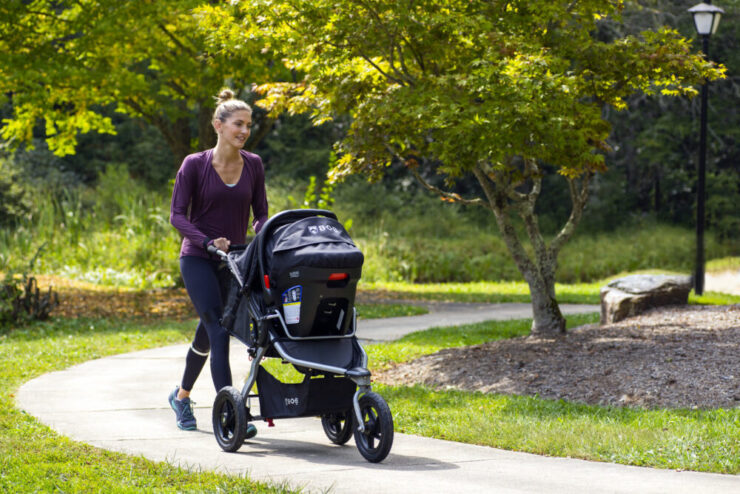I consider my baby stroller to be one of the most important items when I am planning to travel. To me, a safe and sturdy is stroller is important.
Therefore, I never go for a value price tag, I always go for the quality. It is worth spending the few extra dollars to ensure my daughter’s safety when we are out and about.
As a family, my husband and I make a lot of considerations before we purchase a stroller. We just recently bought an umbrella stroller after a lot of research.
I have looked at many different convertible travel systems as well as strollers, and I even compared the value and quality of new and used strollers.
When comparing used and new strollers, I realized that used prams will always have something wrong.
Maybe one of the cheap rear wheel brakes doesn’t work or the suspension system on the front wheels is no more and so on.
The easy way to avoid strollers or travel systems that could prove disappointing was to come up with a personal list of features to look for.
Table of Contents
Fold

One of the features that make or breaks a stroller for me is the fold. Some strollers have a very simple one-hand fold, while others are a little more complicated.
The fold is super important because it determines how compact my new buggy for travel is going to be. Will it fit in my car? Can I travel with it?
Another thing I have noticed when folding my baby’s stroller is how heavy it is. The weight of the buggy can literally take me back to square one.
Here are the various types of folds I have encountered when shopping for a baby stroller for travel:
One-Step Fold
This is my preferred folding system. It is easy and foolproof. With just a single step on either a rear bar or lever, the entire system collapses into a flat fold.
One-Touch Fold
This is literally foolproof and easy folding. I just have to press a button with my thumb while holding the handle, and the entire system breakdowns into a fold.
One-Hand Fold
This type of fold requires me to push a button, twist a handle, and pull on something to complete the fold.
Standing Fold
This is my number one fold. Instead of collapsing away onto the ground, a standing fold brings the pushchair toward me and ends with it in a folded, upright, self-standing position.
Compact Tri-Fold
This is a two-handed fold where I have to lift folding levers on both sides of the handle. The end result is normally similar to an umbrella fold.
Umbrella Fold
The pram folds forward as well as inward into a thick package that is log-shaped instead of flat. The complete fold resembles an umbrella.
Flat Fold
The stroller folds backward or forward in half. Usually, it remains wide as it was unfolded and twice as thick.
Personally, I am of the opinion that the perfect stroller for travel should have a simple, but compact fold. The stroller I have has a one-hand fold, which is quite simple and convenient.
Weight
How heavy is the stroller? This is a question that always lingers in my mind whenever I walk into a stroller store.
Over time, I have realized that the weight of a pram has a big impact on my stroller search. Not to mention that I am not a big fan of heavy buggies.
Not long ago I saw a woman at a parking lot of a mall struggling to stow a folded pram into her car. It seemed more of a struggle than a usual routine.
I have never struggled to stow my stroller in my car, probably because it weighs roughly sixteen pounds. Basically, stroller weight ranges from seven to thirty-five pounds.
Personally, I would favor a baby buggy that weighs between seven and twenty pounds for travel. Any buggy beyond the twenty-pound mark isn’t a suitable travel choice.
Maneuverability and Steering
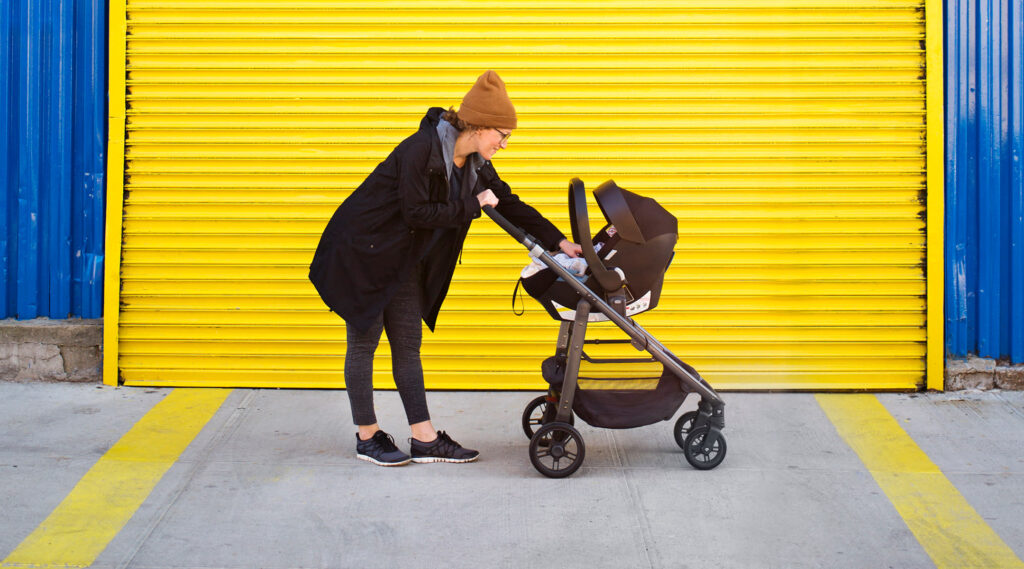
There is but one way to maximize the maneuverability of a stroller, choosing a model that features high-quality sets of wheels.
From a personal point of view, poor-quality tires are normally a problem. Cheap plastic tires basically function poorly.
A buggy that rides more smoothly and maneuvers better is equipped with double wheels on each leg. Single wheels tend to be unstable.
Wheel Material
I learned the hard way with my first buggy that the material of the wheels matters a lot. Here are the most popular materials used by manufacturers.
- Plastic: Plastic tires are most popular with value baby buggies. My very first stroller had plastic wheels. They have a tendency of wearing out unevenly. If I were to buy a stroller for long-term use, I would not choose a model with plastic wheels.
- EVA: This is a foam-filled material that is highly durable and lightweight. I like buggy wheels made of EVA foam because they’re flats and puncture-resistant. However, they’re not the perfect choice for fast strolling, jogging, or running.
- Polyurethane: This is a superior foam-filled material that creates very durable tires. I have seen these wheels in action, they’ve remarkable traction. They’re not easy to puncture; so, they’re low maintenance.
- Aerotech: This material is a combination of rubber and EVA. Wheels made of this material are lightweight, low maintenance, as well as puncture-proof. What I don’t like about these tires is their average traction and comfort.
- Pneumatic: Pneumatic stroller wheels are normally air-filled. They give the smoothest ride, but they require maintenance. Yes, they can go flat and they definitely need air from time to time.
In my opinion, I would settle for polyurethane, Aerotech and air-filled.

Swivel, Suspension, and Brakes/Locks
Swivel front wheels are a feature I cannot do without. Swivel tires provide added mobility and ease of steering in tight spots.
I always prefer buggies with suspension on rear and front wheels. Suspension helps to absorb the shock of potholes and bumps.
There’re some prams that are fitted with suspension only on the rear wheels, but I like the suspension to be on the front wheels.
I wouldn’t be quick to settle for full-wheel suspension because such a stroller is normally unsteady. I would not want this for my baby.
Regardless of how cheap a stroller is, I wouldn’t buy it if it does not have a braking system. I have witnessed a runaway stroller before with a baby inside, the scene was horrible.
Most lightweight buggies for travel are fitted with foot brakes on the rear wheels, which are pretty easy to use. I prefer heavy-duty brakes that will catch and hold without breaking.
Another important addition that makes steering a breeze in crowded places are lockable front wheels. I can easily lock the front wheels of my stroller to maintain a straight motion.
Handlebar
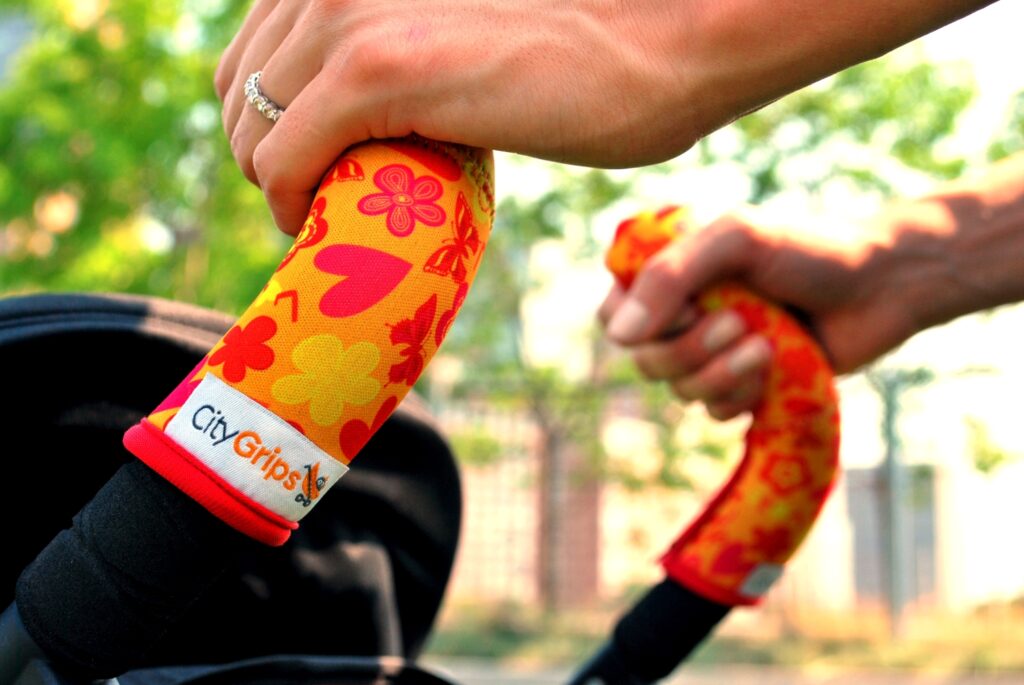
While most full-size baby buggies have one straight handlebar, most lightweight strollers (umbrella) have two curved handles.
When compared to the individual curved handles, the straight handlebar makes navigation a little easier, but the two curved handles allow for an easy fold.
I am a big fan of adjustable handlebars, whether single or a combined handlebar. Adjustable heights make it easy for taller people to push a baby stroller.
Another thing that is of great importance when looking for ergonomic handlebars is padding. All the strollers I have bought so far have padded handles. They’re very comfortable to steer for extended durations.
There’s something that I have observed with double strollers as far as the handlebar goes.
How easy the stroller is to negotiate tight corners and jack over sidewalks depends on the height of the handlebar.
If the handlebar is too short swift navigation and jacking over sidewalks may be challenging. Overall, I would always settle for an adjustable straight handlebar not unless I am buying an umbrella stroller.
Comfort
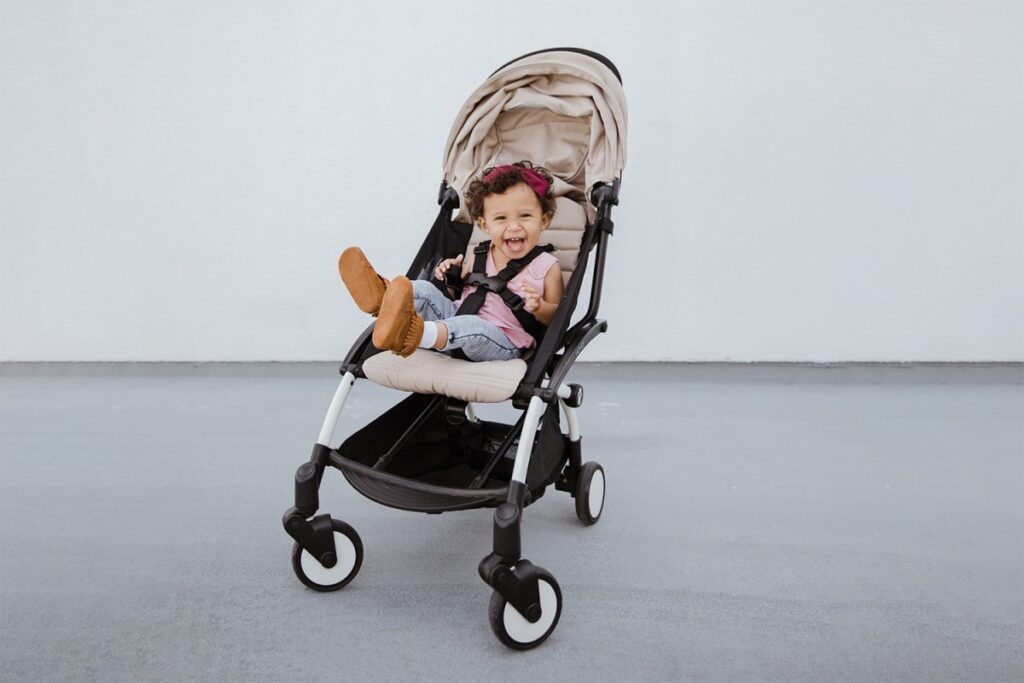
As much as I love to have an easy to fold and easy to steer stroller, my baby’s comfort is the most important thing for me.
Most buggies that are suitable for travel seem to miss some essential comfort features. In fact, I had to spend a few extra dollars on accessories to make my umbrella stroller comfier for my little one.
Seat
I prefer a reclining seat, whether my baby is an infant or older. A seat that reclines is comfier when the baby falls asleep in the pram.
I normally favor a well-cushioned seat. This way, I would not have to worry about buying a separate seat liner to improve the cushioning.
I have seen how a well-padded seat adds comfort to my baby’s back and legs. My little one can sleep soundly even when we are strolling on a rough surface.
Canopy and/or Weather Shield
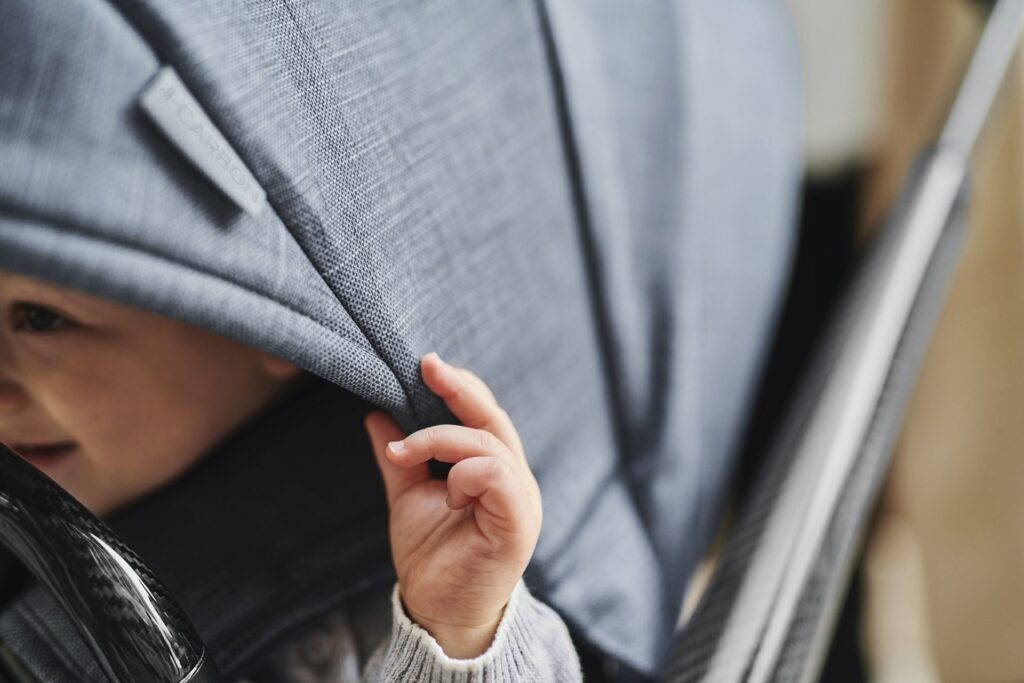
Another important comfort feature is protection against the ultraviolet rays. A canopy has proven to be quite resourceful as far as UV protection is concerned.
There’re three main types of stroller canopies that I have come across, including fully enclosing, extended, and skimpy.
In my view, I think a fully enclosing canopy is suitable for newborns, while an extended and skimpy canopies are suitable for babies older than newborns.
Footrest
This has always been one of my highlighted factors as far as my stroller buying considerations are concerned.
Basically, every stroller I have seen has a footrest, but what differs is how the footrest is designed. Myself, I favor an adjustable footrest.
An adjustable or pivoted footrest is ideal for good posture and development of my little one. The footrest also reduces the possibility of injury in case my child’s feet touch the ground.
Safety
Even though this comes as the fifth point in my list of considerations, it’s ultimately one of the most important highlights of a stroller selection for travel.
Before I get into the extended safety concerns that I have dealt with ever since I started buying strollers, I will first go through the basic safety features of any baby pram.
Safe Design

I learned the hard way that safety starts with the buggy I have set my eyes on.
For instance, there’s a lightweight buggy I bought for travel when my kid turned two, which had cheap plastic wheels and rear brakes. These plastic parts almost caused me to hurt my daughter.
I thought I had the brakes locked in, but as it turns out they broke when I pressed them with my feet. There was my runaway pushchair with my baby in it.
I had to run as fast as I could to catch up with the stroller. Not to mention that some of the wheels were worn out on the edges, making the buggy wobbly.
My simplest solution to this problem is to avoid some stroller brands and models altogether. I won’t gamble with my baby’s safety because of a value price tag.
According to Consumer Reports, there are some specific models that pose the threat of strangulation for babies less than thirteen months old.
They say buggies with a grab-bar can easily suffocate my baby in case she slides under the grab-bar and her neck is caught in the process.
Personally, I don’t mind having a buggy with a grab-bar. If it is so much of a problem, I would simply remove it and ensure my baby is properly secured with the harness/straps.
So, avoid strollers with grab-bars to minimize the risks. Otherwise, consider removing the bar altogether.
After the incident I had with my first lightweight buggy, I never think twice to avoid strollers with cheap plastic wheels and rear brakes.
Harness
The harness is the only thing that keeps my baby put in the stroller. Otherwise, she will be standing, sliding forward, and even leaning forward, all of which are risk factors.
I always ensure that the crotch straps and seat belts are in good shape and well-made. The buckle has to be easy to engage and disengage, I prefer a one-click buckle for disengaging.
Nothing is more infuriating than trying to secure my three-year-old with a poorly made harness. There’re two types of the harness: three-point and five-point.
Three-Point Harness
This type of harness keeps my baby tight and snug in the pushchair without being uncomfortable.
However, I always check to confirm that it has adjustable straps as my baby is not going to be that little for long.
Five-Point Harness
Nowadays, almost all buggy manufacturers use both harness systems. But I am of the opinion that a five-point is a much better option, especially for a baby less than thirteen months old.
I have observed a number of strollers that it is possible to transform a five-point into a three-point. This is a good feature, especially when my baby grows older.
Head-to-Head
When I compare these two harness systems closely, I realized that the main difference lies in the number of straps each uses for securing my child.
A five-point has two separate straps that run over my little one’s shoulders, two over the waist, and one between her legs.
On the other hand, a three-point has two straps on my child’s shoulders and one between her legs, but no waist strap.
Although it has not happened to me, I believe the shoulder straps of a three-point could in some situations come off, putting the baby at risk of falling forward.
Personally, I believe such a thing will hardly happen with a five-point. Also, a five-point absorbs more collision force than a three-point.
Available Storage
I believe the probability of me loading the stroller handlebar is high if it does not have some sort of storage compartment, such as under the seat basket.
While most prams have well-made and properly sized baskets, not all of them are easy to access. This is particularly the case with reclining seats.
I don’t prefer a big basket that will be hard to reach. Some of my favorite baskets have a load function that allows me easy access.
I try as much as possible to avoid baskets that have to be accessed from the front.
Related Articles:
Best Light Weight Strollers For Travel

